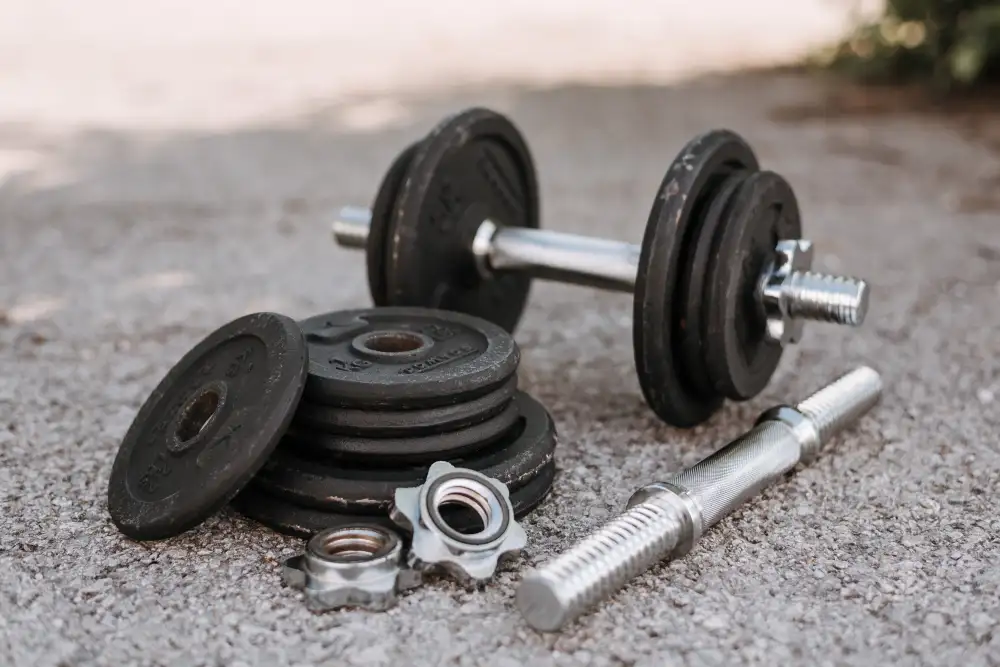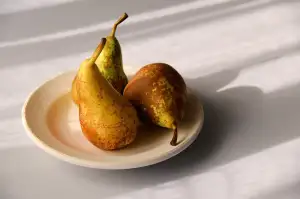Master the Art of Cast Iron Skillet Cleaning: A Step-by-Step Guide to Home Maintenance

- Importance of proper cleaning for cast iron skillets
- Materials needed for cleaning a cast iron skillet
- Step-by-step instructions for cleaning a cast iron skillet
- 1. Preparing the skillet for cleaning
- 2. Removing food residue from the skillet
- 3. Washing the skillet with hot water
- 4. Drying the skillet thoroughly
- 5. Applying a thin layer of oil to the skillet
- Tips and tricks for maintaining a clean cast iron skillet
- Common mistakes to avoid when cleaning a cast iron skillet
Cast iron skillets are a beloved kitchen tool known for their durability and ability to distribute heat evenly. However, proper cleaning is essential to maintain their quality and extend their lifespan. In this step-by-step guide, we will explore the importance of cleaning your cast iron skillet, the materials needed, and provide you with expert tips on how to keep it in pristine condition. By mastering the art of cast iron skillet cleaning, you can unleash your culinary creativity with confidence.
Importance of proper cleaning for cast iron skillets
Proper cleaning is essential for maintaining the quality and longevity of your cast iron skillet. Neglecting to clean it properly can lead to a buildup of food residue, which can affect the flavor of your dishes and even cause them to stick to the pan. Additionally, if not cleaned correctly, moisture can accumulate on the surface, leading to rust and deterioration. By taking the time to clean your cast iron skillet thoroughly after each use, you ensure that it remains in optimal condition, allowing you to continue creating delicious meals for years to come.
Materials needed for cleaning a cast iron skillet
To properly clean a cast iron skillet, you will need a few essential materials. Firstly, you will need a stiff brush or sponge specifically designed for cast iron cleaning. This will help to remove any stubborn food residue without damaging the skillet's surface. Additionally, you will need hot water to wash the skillet thoroughly. Make sure the water is not too hot as it can cause warping or cracking of the skillet. Lastly, you will need a clean cloth or paper towels for drying the skillet and a high smoke point oil such as vegetable oil or flaxseed oil for seasoning the skillet after cleaning. With these materials on hand, you'll be ready to tackle the task of cast iron skillet cleaning with ease.
Step-by-step instructions for cleaning a cast iron skillet
1. Preparing the skillet for cleaning: Allow the skillet to cool down completely before starting the cleaning process. This will prevent any burns or accidents.
2. Removing food residue from the skillet: Use a stiff brush or scraper to gently remove any stuck-on food particles. Avoid using soap or abrasive cleaners, as they can damage the seasoning of the skillet.
3. Washing the skillet with hot water: Rinse the skillet under hot running water to remove any remaining debris. Avoid using cold water, as it can cause thermal shock and crack the skillet.
4. Drying the skillet thoroughly: Pat dry the skillet with a clean towel or paper towels. Make sure to remove all moisture from both the inside and outside of the skillet to prevent rusting.
5. Applying a thin layer of oil to the skillet: Using a cloth or paper towel, apply a small amount of cooking oil (such as vegetable oil or flaxseed oil) to coat the entire surface of the skillet, including the handle. This will help maintain its non-stick properties and prevent rust.
Remember, proper cleaning and maintenance are essential for preserving your cast iron skillet's longevity and performance.
1. Preparing the skillet for cleaning
Before you begin the cleaning process, it's important to prepare your cast iron skillet properly. Start by allowing the skillet to cool down completely after use. This will prevent any potential accidents or burns during the cleaning process. Once cooled, gently scrape off any excess food particles or residue using a wooden spatula or scraper. Be careful not to scratch the surface of the skillet while doing this. Removing as much food residue as possible at this stage will make the cleaning process easier and more effective.
2. Removing food residue from the skillet
To remove food residue from your cast iron skillet, start by using a stiff brush or scraper to gently scrub away any stuck-on bits. Be sure to avoid using soap at this stage, as it can strip away the skillet's seasoning. If the residue is stubborn, you can add a small amount of coarse salt and scrub in circular motions. This will help lift off any remaining food particles without damaging the skillet's surface. Once the residue is removed, proceed to the next step of washing the skillet with hot water.
3. Washing the skillet with hot water
To wash the cast iron skillet, start by running hot water over it. Use a sponge or a stiff brush to scrub away any remaining food particles. Avoid using soap as it can strip away the skillet's seasoning. Instead, focus on using hot water and elbow grease to remove any stubborn residue. Make sure to clean both the inside and outside of the skillet thoroughly. Rinse off any soap residue and dry the skillet completely before moving on to the next step in the cleaning process.
4. Drying the skillet thoroughly
After washing the cast iron skillet with hot water, it is crucial to dry it thoroughly to prevent rusting. Start by using a clean towel or paper towels to remove as much moisture as possible. Make sure to dry both the inside and outside of the skillet, paying extra attention to the handle and any crevices.
Next, place the skillet on a stovetop burner set to low heat for a few minutes. This will help evaporate any remaining moisture. Alternatively, you can also put the skillet in an oven preheated to a low temperature (around 200°F) for about 10 minutes.
Once completely dry, allow the cast iron skillet to cool down before proceeding to the next step of oiling it. Remember, proper drying is essential for maintaining the integrity of your cast iron skillet and preventing any potential rust formation.
5. Applying a thin layer of oil to the skillet
To ensure the longevity and performance of your cast iron skillet, it is crucial to apply a thin layer of oil after each cleaning. This step helps to prevent rust and maintain the skillet's non-stick surface. After drying the skillet thoroughly, pour a small amount of cooking oil onto a paper towel or cloth. Rub the oil all over the skillet, including the handle and exterior. Make sure to coat every inch of the surface with a thin layer of oil. This process creates a protective barrier that prevents moisture from reaching the iron and causing rust. Remember, less is more when it comes to oiling your skillet - you only need a thin coating for effective protection. By incorporating this simple step into your cleaning routine, you can enjoy a well-maintained cast iron skillet that will serve you for years to come.
Tips and tricks for maintaining a clean cast iron skillet
1. Avoid using soap: Soap can strip away the seasoning on your skillet, so it's best to avoid using it. Instead, rely on hot water and a stiff brush to clean off any food residue.
2. Use kosher salt as a scrub: For stubborn stuck-on food, sprinkle some kosher salt onto the skillet and scrub with a paper towel or cloth. The coarse texture of the salt helps to remove debris without damaging the surface.
3. Dry thoroughly after cleaning: Moisture is the enemy of cast iron, so make sure to dry your skillet completely after washing. Place it on a stovetop burner over low heat until all traces of moisture have evaporated.
4. Re-season regularly: To maintain the non-stick properties of your cast iron skillet, it's important to re-season it periodically. Apply a thin layer of oil (such as vegetable or flaxseed oil) to the entire surface and bake it in the oven at 350°F for an hour.
5. Store properly: To prevent rusting, store your cast iron skillet in a dry place with good air circulation. Avoid stacking other cookware on top of it, as this can cause scratches or damage to the seasoning.
By following these tips and tricks, you can ensure that your cast iron skillet remains clean and in excellent condition for years to come!
Common mistakes to avoid when cleaning a cast iron skillet
Common Mistakes to Avoid When Cleaning a Cast Iron Skillet:
1. Using soap or harsh detergents: One of the biggest mistakes people make is using soap or harsh detergents to clean their cast iron skillet. This can strip away the seasoning and leave your skillet vulnerable to rust.
2. Scrubbing with abrasive materials: Avoid using steel wool or abrasive scrub brushes on your cast iron skillet. These can scratch the surface and damage the seasoning.
3. Soaking for too long: While it's important to soak your skillet briefly to loosen any stuck-on food, leaving it submerged in water for extended periods can lead to rusting.
4. Not drying thoroughly: After washing, make sure to dry your cast iron skillet completely. Any moisture left on the surface can cause rusting.
5. Skipping the oiling step: Applying a thin layer of oil after cleaning helps maintain the seasoning and prevent rust. Don't skip this crucial step in the cleaning process.
By avoiding these common mistakes, you can ensure that your cast iron skillet remains in great condition and continues to provide you with delicious meals for years to come.
By following the proper cleaning techniques outlined in this guide, you can ensure that your cast iron skillet remains in top condition for years to come. A well-maintained skillet not only enhances the flavor of your dishes but also provides even heat distribution for better cooking results. With regular cleaning and seasoning, you can prevent rust and maintain the non-stick surface of your skillet. So, take care of your cast iron skillet, and enjoy the countless delicious meals you'll create with it. Happy cooking!
Published: 27. 01. 2024
Category: Home



